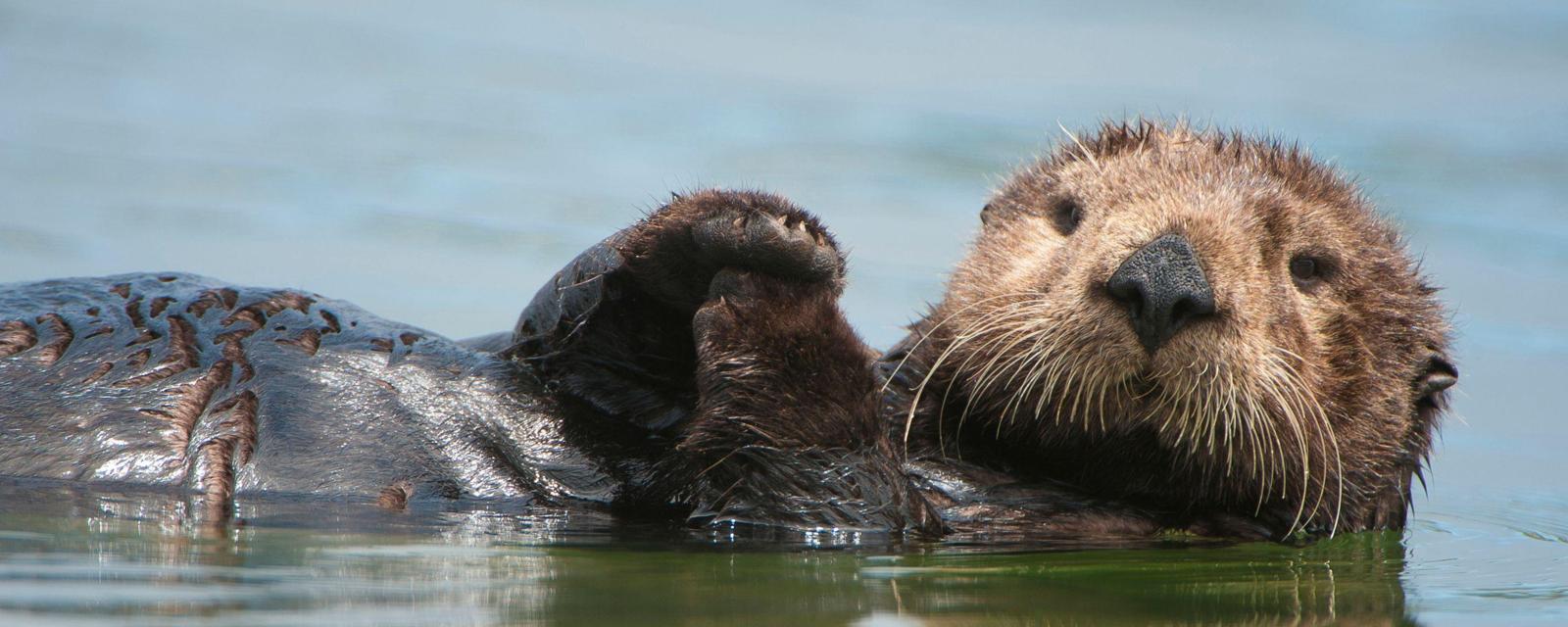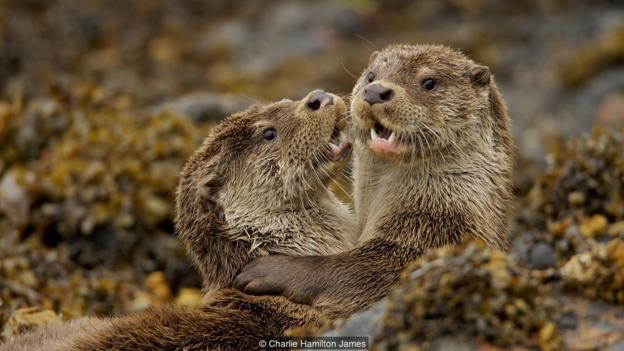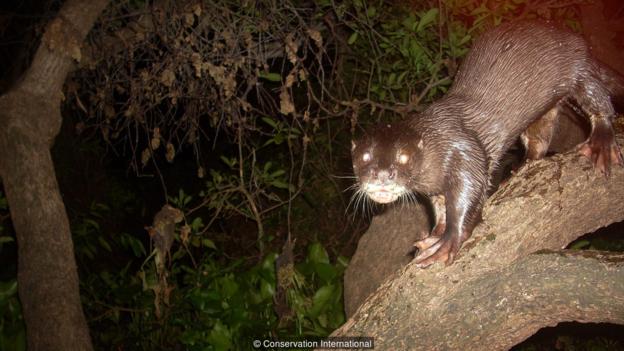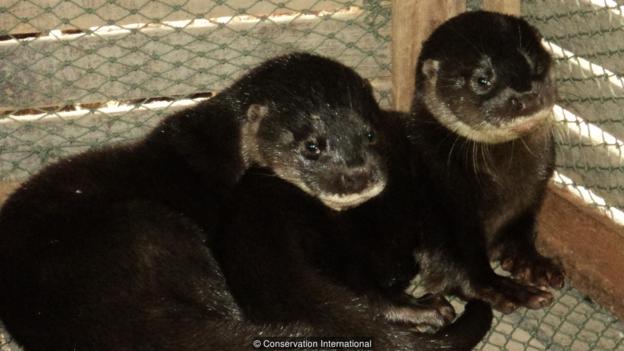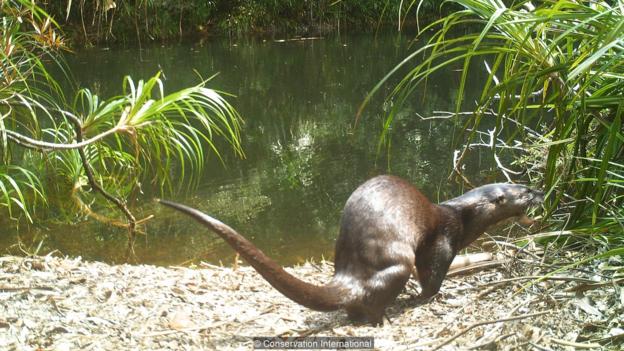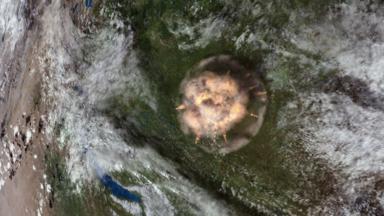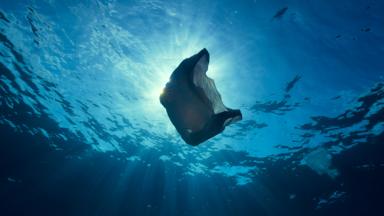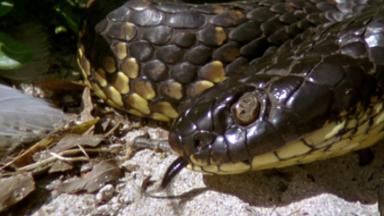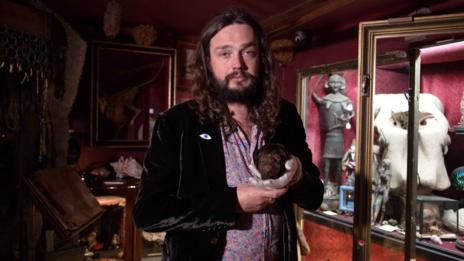All over the world otter populations have been hanging in the balance, but two very different approaches have been successful in saving the species
Loveable, playful, inquisitive, tenacious, energetic, versatile, charming and undeniably cute. These are just some of the words that can be used to describe an otter. If you’ve been lucky enough to see one of these shy semi-aquatic animals in the wild, you’ll instantly understand why.
But despite all their lovable qualities, otter populations all over the world hang in the balance.
Because they haven’t always been appreciated (at least not alive), sea otters were almost hunted to extinction for their warm and luxurious pelts. More recently, many species including the common, or Eurasian, otter have been hunted and trapped because they were seen as threats to fish stocks and competition for our food. Sometimes they were even killed for fun.
Hairy-nosed otters in Cambodia
Not all approaches to conservation are so well funded, but this doesn’t mean they are any less successful.
Lutra sumatrana is one of the rarest and most endangered species of otter. In the 1990s, it was thought extinct throughout its range in Southeast Asia due to habitat loss, poaching, local consumption of otter meat and a loss of its sources of food.
Found on every continent except Oceania and Antarctica, not one of the 13 species has yet become extinct.This says a lot about the tenacious nature of these members of the mustelid family, but also about the efforts many organisations and individuals have played in their conservation. The approaches and use of technology may differ vastly in different parts of the world, but the long-term survival of the species is what matters.
“This charismatic and vital species would not have survived without these protections.
“We need them to survive so they can exert positive effects on kelp forests and estuarine habitats, making those areas healthier and more ecologically diverse,” Johnson says.
Hairs around the nostrils are one of the main distinguishing features of hairy-nosed otters compared to Eurasian otters (credit: Conservation International)
However, surveying between 2006 and 2013 at possible habitats confirmed the presence of several small populations. In Cambodia, for example, it was found in four areas; one of the largest populations being around the flooded forest surrounding the Tonle Sap Lake.
Now the species has been ‘rediscovered’, it needs to be protected so that the populations can be allowed to grow. And that’s where organisations such as Conservation International have worked to protect and conserve the area and the species.
As Sokrith Heng, Conservation International’s lead researcher for the survey, explains, even though there are a number of laws and regulations to protect the species, enforcement on the ground is weak and limited and local people’s awareness of the importance of the wildlife and ecosystems they live in is very limited.
A pair of juvenile hairy-nosed otters found in the house of a hunter (credit: Conservation International)
Poverty in areas such as rural Cambodia can also be a problem and often pushes local communities to use natural resources in unsustainable ways.
In response to this, Conservation International took action at Tonle Sap Lake. Their approach was to restore critical habitat, raise awareness in local communities and schools, and suggest laws and regulations to better protect the species. They also established conservation zones, protecting these through collaboration with government and community rangers as well as helping local community fisheries to development alternative livelihoods.
Key to this was directly engaging local community members in otter research and forming a group of ‘otter ambassadors’ who help spread awareness resulting in stronger support from locals.
This is important Heng says because; “Educating local people means they can share their knowledge to other community members.”
Flooded forests are an important habitat for hairy-nosed otters (credit: Conservation International)
An important part of the successful conservation here is ensuring that local communities are able to sustainably use and manage their resources, and that the communities are financially stronger, explains Heng. For example, some community fisheries now have better protection for the otters: they are patrolling the area to stop illegal activities and teaching otter conservation in the local area.
At Tonle Sap Lake, these approaches resulted in fewer otter traps and skins being recorded by officials and researchers, both signs that fewer animals were being killed. While ongoing habitat restoration combined with less hunting and greater awareness is helping to ensure a brighter future for the hairy-nosed otter.
Although the technology maybe very different to that used at Monterey Bay, this method of conservation has been just as successful, as hairy-nosed otters now have at least one stronghold in Cambodia.
It is a good result for the country and for a species that was once thought extinct.
UK viewers can watch Natural World: Supercharged Otters on iPlayer.
Never miss a moment. Sign-up now for the BBC Earth newsletter.
